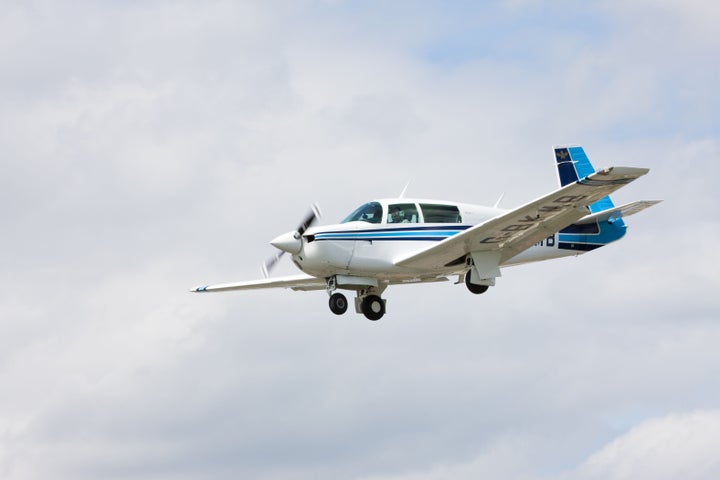
Last Wednesday, the environmental advocacy group Friends of the Earth filed a lawsuit against the U.S. Environmental Protection Agency, challenging the agency's failure to regulate lead emissions from aircraft that burn so-called avgas, which now accounts for approximately half of the country's airborne lead.
Nearly 200,000 airplanes and helicopters in the U.S. continue to fly on fuel containing lead, despite the toxic metal's known health risks to the children living, playing and breathing below.
"Everyone thinks that since lead has been removed from automobile gasoline, even NASCAR, the problem is gone. But aviation gasoline is still a big problem," said Marcie Keever, legal director for Friends of the Earth. "We are particularly concerned about the impact of lead on the health of children."
After Friends of the Earth discovered in 2003 that avgas had "basically been ignored in all attempts to get lead out of fuel," said Keever, the group sent a letter to the EPA. They followed that with a petition, then a notice of intent to sue and now a lawsuit.
The EPA told The Huffington Post that they would evaluate the suit and respond accordingly. The agency also noted that, in April 2010, they responded to the original Friends of the Earth petition with an Advance Notice of Proposed Rulemaking (ANPR). They are currently collecting relevant data that, the EPA said, "is necessary before determining next steps."
More than 3 million children attend school in close proximity to the some 20,000 airports where avgas may be used. In general, the airplanes that fill up on this fuel run on piston engines, much like cars, and tend to be smaller and older machines than today's commercial airliners or military jets.
In 2010, the EPA identified 16 regions in the United States that fail to meet clean air standards for lead. Each one of these regions either contains or is next to an airport that uses leaded avgas. A study out of Duke University in 2011 found that the closer a child lived to a North Carolina airport with avgas, the more lead was likely flowing through that child's blood.
There is no safe level of lead exposure, according to the EPA. Even in small doses, inhaling or ingesting the metal could damage a child's brain and lead to learning disabilities and decreased intelligence.
"Brain development is delicate in terms of its timing. Once that's been disturbed, it's not clear that a child can recover from it," said David Bellinger, a professor of neurology at Children's Hospital Boston. "Preventing exposure is the best strategy."
What's more, the metal doesn't dissipate in the environment. Lead spewing from a plane may eventually settle onto a ball field, a swimming hole or a family's vegetable garden. "We know more about lead than any other environmental chemical, yet we just keep learning that both the range of bad things it does and the levels at which it does those bad things keeps surprising us," added Bellinger.
Benet Wilson, spokesperson for the Aircraft Owners and Pilots Association said the group is working with the EPA and the Federal Aviation Administration to transition to an unleaded avgas. "The issue is that we have a lot of aircraft out there that can only use this particular fuel," she said. "People are still flying planes that date back to 1930s and 1940s."
Overall, about 70 percent of these airplanes could use unleaded fuel safely. However, the other 30 percent of the fleet currently do need the leaded gasoline in order to operate, according to Jens Hennig, vice president of operations at the General Aviation Manufacturers Association. He added that this smaller proportion of planes consumes 70 percent of avgas.
Even for the planes that could use an unleaded fuel, making an unleaded alternative available is not simple. General aviation airports tend to house two fuel tanks: one with jet fuel for turbine-powered planes, and another with avgas. "Suddenly introducing a third flavor of fuel would add significantly to the complexity for fuel service providers," Hennig said.
But some aviation groups, including the Aviation Fuel Club, are working to make such an alternative fuel available at airports around the country in an effort to limit this potential source of lead exposure for airport workers, airplane pilots and passengers, along with everyone else in the surrounding community, including children.
Of course, many children in the U.S. continue to be exposed to lead via paint and water pipes, among other sources.
"Lead keeps popping up in unexpected places, which is why it's such a persistent problem," said Bellinger. "You can make a decision in Washington to take lead out of gas or paint, but there are a lot of other pathways that we need to pay attention to in order to address the problem completely."
